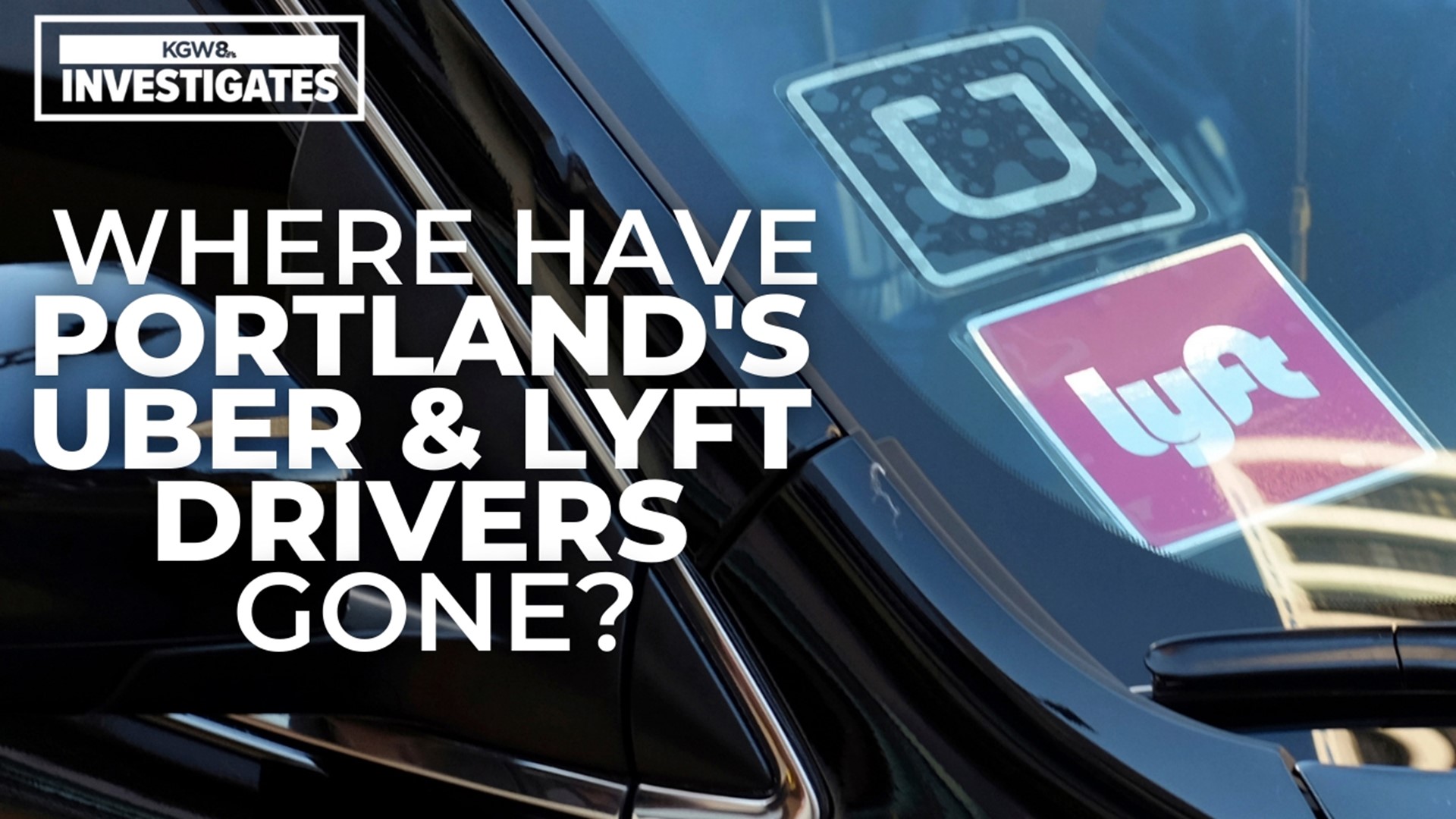PORTLAND, Ore. — In a pandemic filled with stops and starts, it feels like people are moving again, yet rideshare giants Uber and Lyft are struggling to bring drivers back. The driver shortage in Portland can mean longer wait times for riders.
“After a long trip, you just want to get home,” said Eros Lamb, waiting for an Uber ride at PDX. “Pretty soon I’m going to have to find a friend and pay them gas money to take me home.”
Today, there are roughly 6,500 Uber, Lyft and taxi drivers registered with the city of Portland, compared to 17,000 three years ago.
“A lot of the drivers are not coming back because they’re concerned about COVID,” said Uber driver Jerald McClinton.
During the pandemic, 77% of Uber and Lyft drivers in Portland said COVID was the primary reason they stopped driving, according to a study by DHM research conducted for the city of Portland in 2020.
“I have kids. I have a family. My father, he’s older. I don’t want to get anyone sick,” said McClinton.
Drivers also left because there wasn’t as much demand. Portland went from almost 13 million Uber, Lyft and taxi rides a year in 2019 to roughly 4 million in 2021. Drivers weren’t making as much money and pay models changed, along with bonuses. Additionally, Uber and Lyft drivers were eligible for Pandemic Unemployment Assistance funds under the CARES Act, easing some financial pressures.
“There’s been kind of a reassessment of the whole rideshare industry,” said former Uber driver Jason Timm. He left during the pandemic for a job as a DJ and experience designer. Timm was one of Portland’s most popular rideshare drivers, even featured in an Uber promotion.
“I think there’s a lot more opportunities for actual jobs out there with benefits and things, so it’s harder for people to make the choice to stay in their car all day and have pay all the costs that go with that,” said Timm.
Both Uber and Lyft are offering incentives to try and lure drivers back to the apps but they face stiff competition from other gig services — like food delivery.
“A lot of drivers switched over to Uber Eats, Door Dash, Instacart, many other gig economy jobs,” explained Sergio Avedian, who writes for the industry blog Ride Share Guy.
Avedian explained Uber and Lyft are in the same position as many other companies and industries. The rideshare giants are fighting to attract workers.
“Top to bottom, everybody was forced to hit their reset button—value their worth, what they’re doing and should they change jobs,” said Avedian.
The driver shortage has impacted wait times for riders in Portland, although conditions appear to be improving. Last year, the average wait time in Portland for an Uber, Lyft or taxi was almost five minutes — compared to a roughly three-and-a-half-minute wait in 2019, according to data provided by the Portland Bureau of Transportation.
It’s difficult to gauge whether this driver shortage really impacts how much you pay for a ride. Uber and Lyft don’t publicly disclose pricing data.
Analysis by the research firm Rakuten Intelligence found the cost of a ride from a ride-sharing app like Uber or Lyft increased 92% nationwide between January 2018 and July 2021. Before the pandemic, the rideshare companies subsidized the price of rides with promotions and discounts — even lowering the cost of rides to attract new users to the apps.
Uber and Lyft suggest business is bouncing back after a slump caused by the pandemic. Both companies reported growing revenue and returning passengers in quarterly earnings released last week.
“While the Omicron variant began to impact our business in late December, Mobility is already starting to bounce back, with Gross Bookings up 25% month-on-month in the most recent week,” said Uber CEO Dara Khosrowshahi in a statement.
At PDX, the demand for Uber and Lyft drivers is clear. During a busy afternoon, a line of passengers could be seen waiting, holding their phones, anxiously watching for their driver.
“It’s just not the convenience that it used to be,” said Karen Roberts, after she arrived at PDX. “We’re waiting.”
The question is: Will Uber and Lyft drivers come back as Portland starts moving again?

